Castine and Transit to Southwest Harbor
Sunday, August 16, 2015

We had an easy passage from Belfast, up the Bagaduce River past Castine and into Smith Cove. We picked Smith Cove because of its remoteness and protection (a thunderstorm event was predicted) and yet closeness to Castine in case we wanted to go ashore.
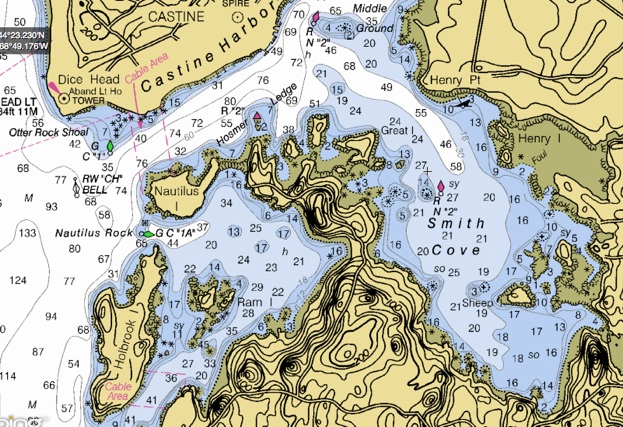

Anchorage
It was about three miles by dinghy back into Castine but we didn’t anticipate needing to go ashore often and we wanted a peaceful anchorage. It didn’t start out peaceful though, as a playful seal went right under the anchor chain as Drew was setting the anchor, giving him quite a start!
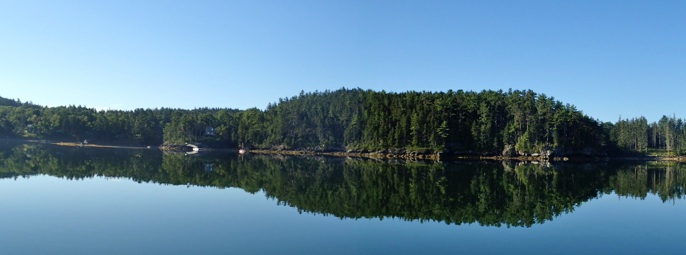
In the morning the Cove was as smooth as glass and you could see the reflection of all the trees in the water. There were a couple of houses back in the trees, but nothing close. We shared the large Cove with a couple of other boats the first night, but it was very peaceful.
The storm event turned out to be only a rain event for us the next day, but rain it did, for 14 hours straight! We did some reading and catching up on napping, plus mopping up a little water inside. Turns out one of our large windows about the galley leaks a little now and will have to be dealt with this winter.
Early that day, a 100’ mega motor yacht pulled into the Cove but anchored quite a distance away. Guess they were concerned about the storm event too. The plan was to only spend the two days in Smith Cove and head out to Buck’s Harbor on Wednesday but when you are cruising, plans are written in jell-o, subject to frequent change. This was one of those gelatin-type days.
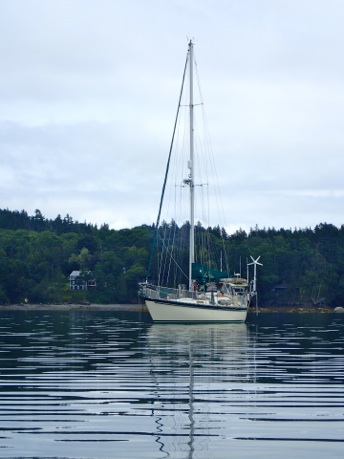
When we were doing our pre-departure engine check, Drew found that one of the heat exchanger bolts had fallen out AGAIN. Then he found that the second bolt, the one he had just tightened in Portland, was loose. So he decided to fix this problem once and for all -- out came the J.B. Weld and the bolts were put in place permanently. Of course this took several hours of cleaning and surface prep and then the J.B. Weld had to sit up for several hours before we could leave. So
we moved our reservation at Buck’s Harbor back a day and decided to take the dinghy to Castine instead. There was quite a bit of fog so we knew we wouldn’t be staying long, but that was okay -- Castine isn’t very big.
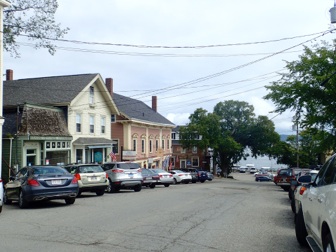
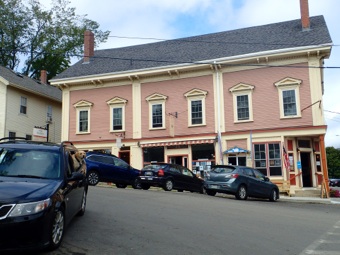
We didn’t have plans to see anything specific or need anything from the market, but just wanted to check out the town. Turns out Castine, settled in 1613, was initially part of New France, named after Jean-Vincent d’Abbadie de Saint-Castine, the French military officer who Henry Wadsworth Longfellow immortalized in "The Baron of St. Castine.” The site guarded entry into a lucrative fur and timber region so was fought over by several European powers, also being governed by the Dutch and English before the American Revolution. Even then, it was the last area given up by the British and one of the first to be retaken by the British in the War of 1812.
We walked around Castine a bit, looked at some of the historical homes and checked out the local market. It had a reasonable selection so we took a few things back to the boat with us.
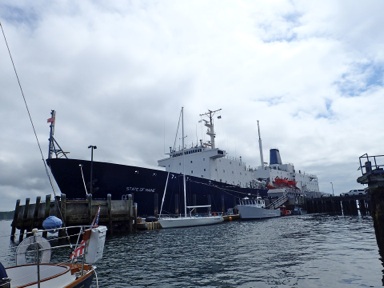
On the way back to the town dock to get the dinghy, we stopped to look at the State of Maine - a training ship for the Marine Maritime Academy based in Castine. The MMA is a state college and nautical training institution; however, unlike the Naval Academy in Annapolis, since this is a state school, a congressional recommendation is not needed to attend and graduates are not required to serve in the military upon graduation. There are about 900 undergraduates at MMA.
A former US Navy research vessel, T/S State of Maine has been operated by the MMA since 1997 but was briefly called back into active duty after Hurricane Katrina to house oil rig workers working to repair damaged rigs and federal law enforcement officers working in New Orleans. We talked about taking a tour -- it is open to the public -- but the fog was rolling back in and we were afraid we wouldn’t be able to find out way back to Smith Cove if we waited too much longer.
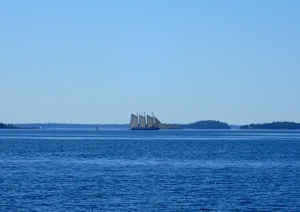
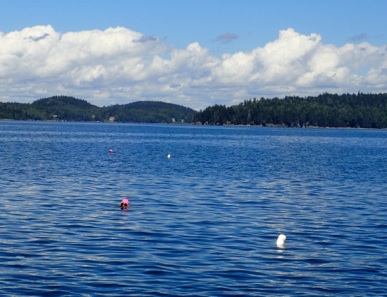
The next morning all looked good on the engine and it was clear of fog so we headed on to Buck’s Harbor. Only three miles overland from Smith Cove, Buck’s Harbor, Brooksville ME, is at the head of Eggemoggin Reach, a wide transit along the north side of Deer Island. But since we had to exit the Bagaduce River and go around Cape Rosier, our trip would be about 11 nautical miles. Along the way we saw a triple-masted schooner in the distance. Then we started seeing a lot more of the dreaded double pots.
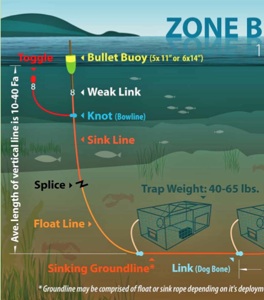
Required by law, all pot lines must have a second way to retrieve the lobster pots. Some fishermen, especially offshore, use a linked train of pots with a float at each end. But in the shallower waters, this second float can be accomplished with a tethered “toggle” float linked to the primary or bullet buoy. In this case, it is pretty clear that the white float is the bullet buoy and the red trailing float is the toggle, but where there are dozens of these pots in close proximity, it becomes a lot less clear what is tethered to what. The reason this is important to us is that if you go between a bullet buoy and a toggle, the line connecting them is only a few feet underwater. It will wrap around our propeller or catch on our hull. Neither of these is good!
We have talked to several people that say the pot saturation in Maine is out of control. Everyone wants cheap lobster so the prices stay down and the fishermen put out more and more pots to keep their income up. All we know is that the stress of avoiding these pots is taking all the fun out of being in Maine. We are kind of glad the summer is almost over.
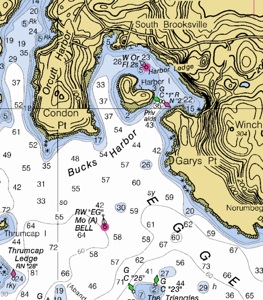

The Buck’s Harbor Marine mooring field is behind a little island just off the start of Eggemoggin Reach. It was suggested to us by our Waterford friends Rick and Valerie who have been chartering in Penobscot Bay for years. There is no room to anchor in Buck’s Harbor so we picked up a mooring and settled in for the afternoon. After all, it doesn’t take long to go 11 nm.
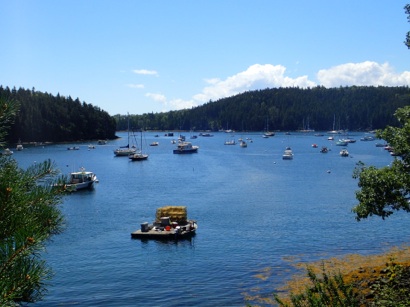
It took us a little while to find our mooring assignment -- the balls were well-marked but there was a boat on the ball we were assigned so we had to get another assignment and go find that ball. But in the end we were successful and decided to go for a walk on such a beautiful day.
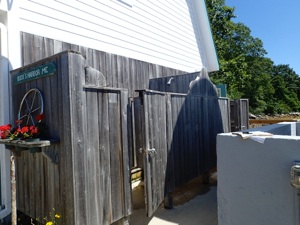
The facilities at Buck’s Harbor Marine are pretty minimalistic but the people are nice and they had great wifi. There is one indoor shower but there are two outdoor ones. Guess those don’t get used much in the evenings when it gets cold.
We walked into town and found the one market and one restaurant, both in the same building.
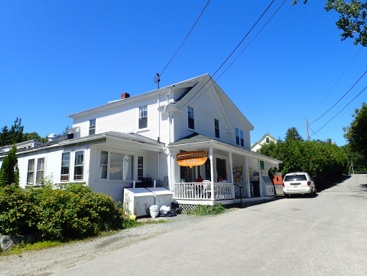
Picked up a couple of things at the market, then headed back to the boat for a quiet evening.
We had arranged to meet our friends Curt and Kathy from S/V Five & Dime at the Wooden Boat School anchorage the next evening and cook dinner on La Vita. But the next morning, a totally unexpected thing happened.
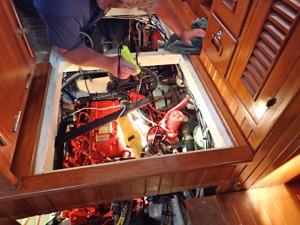
Each time we tried to start the main engine, it blew the breaker. This looked suspiciously like the starter run solenoid (of which we carry a spare) but getting to the starter proved to be the difficult part. Finally Drew got enough of the alternator apart to be able to troubleshoot the starter. The solenoid was good and, when off the engine, the starter engaged. So we greased the pinion on the starter and put everything back together. And it all worked. Guess the starter just wanted a little grease and attention.
The folks at Buck’s Harbor Marine were great -- we let them know we may have to stay an extra night and they said “no problem”. Then when we got everything running and left the mooring ball after 1 pm, they also said “no problem”. Most places have a check-out time and if you stay over that you pay for another night. Very nice place.
We were able to pull out a sail for the trip east in Eggemoggin Reach, a beautiful tree-lined wide thoroughfare between the mainland and Deer Island. Not even that many pots out in the center. There were some other boats out, enjoying the beautiful day.
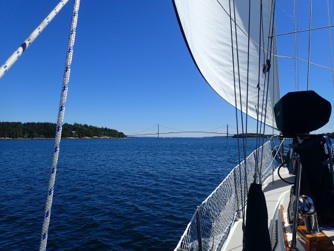
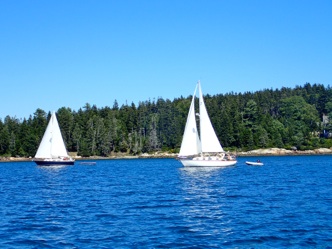
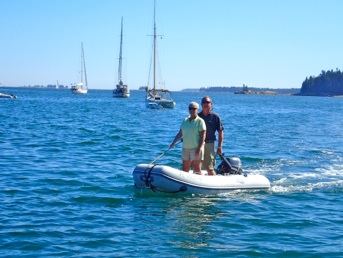
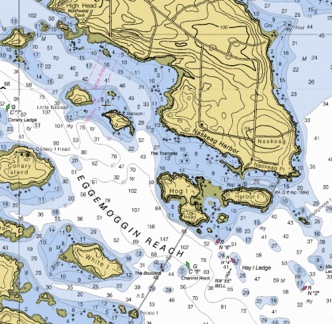
It was only about 10 nm to the anchorage next to the Wooden Boat School. Tucked in behind Babson and Little Babson Islands, at the eastern end of Eggemoggin Reach. There were a lot of pots as we came into the anchorage but none to speak of in the anchorage/mooring field.
Curt and Kathy had beat us there by a couple of hours and came over to see us as soon as we got there.
We met at the Wooden Boat School’s dock, had lots of hugs all around and walked up the hill to the Wooden Boat School campus.
The Wooden Boat School is operated by the publishers of Wooden Boat Magazine. It is a 64-acre campus and has been offering classes in classic boat building for 35 years.
It is like summer camp for old guys. The classes run from a few days to several weeks and cover all aspects of boat building; some students just pitch a tent and stay all summer, taking one class after another and having a beautiful wooden boat to take home on their trailer at the end of the summer.
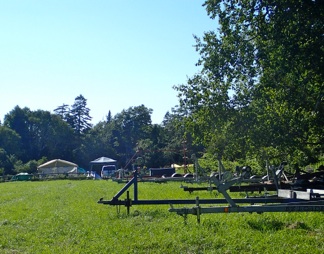
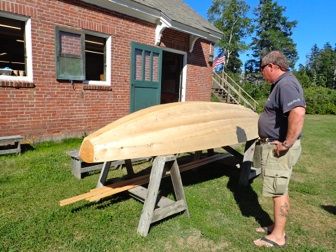
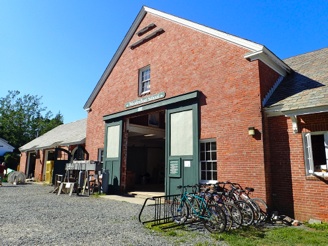
The classes are only in the summer but it sounds like a fun thing to do sometime
http://www.thewoodenboatschool.com/
The classes were in an old barn and while we couldn’t just walk through the classrooms, the doors were open so it was no problem to see what they were working on. We admired their work and wandered around a little, then headed over to the gift shop.
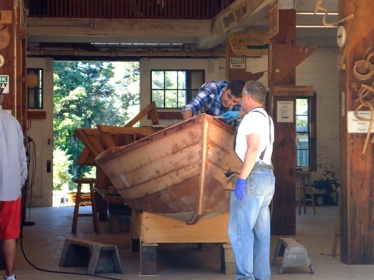
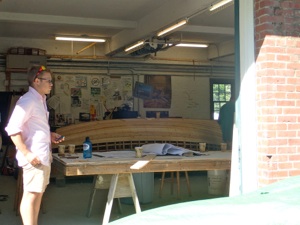
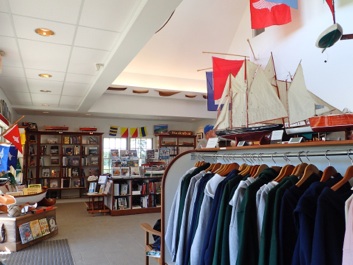
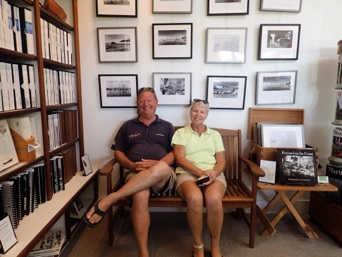
They also had a nice library area where you could buy old editions of the Wooden Boat Magazine and lots of pictures of boats that had been built there over the years. What a great place! We had opted to pick up one of their cheap ($20) mooring balls but there was plenty of room behind just outside the mooring field for anchoring.
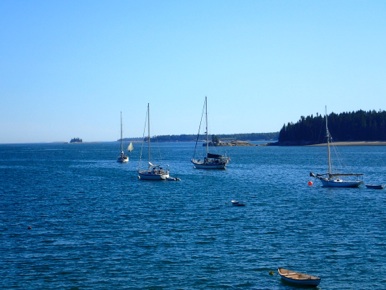

By now it was time to get dinner started. We had happy hour on S/V Five & Dime and then went back to La Vita for a French provencial pork roast. Wonderful evening - great friends, great food and a great anchorage!
The next morning we dropped the mooring ball and headed towards Southwest Harbor. Curt and Kathy would be heading the opposite way -- hopefully we can get together this fall in Florida.
They had warned us that the lobster pots were especially thick this year; in the four summers they have been coming to Maine, this has been the worst. And they weren’t kidding! We have never seen pots like this. It was a four hour motor to Southwest Harbor and there was never a break -- Stephanie was on the foredeck with her headset on, helping to spot a path through the millions of floats while Drew had to drive the entire way on full alert.
The course from Eggemoggin Reach to Southwest Harbor goes through the York Narrows and the Casco Passage. The pots were especially thick here -- in marked navigation channels where there were significant hazards on either side of the fairly narrow channels. Even up into Southwest Harbor, the pots were so thick it was sometimes hard to tell which way to go. Luckily we did not pick up a pot but we were totally exhausted by the time we got to the Hinckley mooring field.
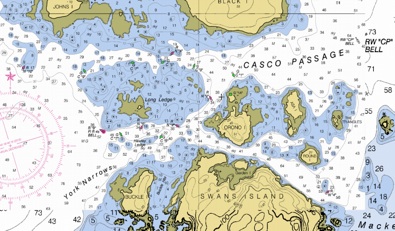
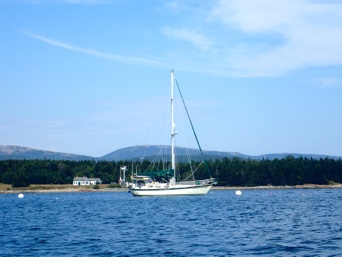
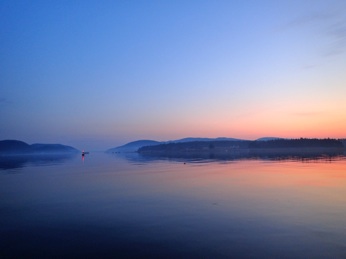
We plan to stay at Southwest Harbor for a week and explore Mt. Desert Island and Acadia National Park by land. Southwest Harbor is a VERY rolly mooring field (as bad as Rockland) during the day due to all the lobstermen working all those pots and the idiot pleasure boats driving through the mooring field way too fast. We at first thought about moving La Vita to different anchorages around Mt. Desert like Vaughan and Linda are doing on S/V Legacy, but decided just to stay put and use the Island Explorer bus and our dinghy to get around. Navigating the lobster pots just takes too much of the fun out of the experience; besides, between the hiking in Acadia National Park and dinghy rides we hope to be off the boat during the day when the lobstermen are busy. The nights are peaceful and the sunsets and sunrises are beautiful. All is good.